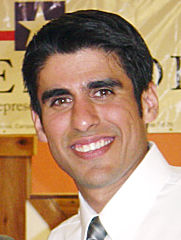A proposed Texas A&M Engineering Extension Service feasibility study for creating a manufacturing workforce development program at the high school, junior college and community college level in Cameron County will likely be expanded to include the entire Rio Grande Valley.
The purpose of the study would be to determine what workforce development resources exist that can be coordinated “to attract 21st century manufacturers,” said state Rep. Eddie Lucio III., D-Brownsville.
“Then we’ll have an understanding of what assets we have and how they’re being used,” he said. “We’ll know how to enhance programs and those that need assistance.”
The study also will determine whether the Valley has sufficient facilities for such a program or if a new facility is required, though for now it’s a study in search of funding, Lucio said.
“We’re seeking support for a local match that we need to draw down a much larger match from the (Economic Development Administration) at the federal level,” he said.
Mike Hernandez and OP 10.33, the nonprofit philanthropic organization he founded, are waiting in the wings with funding if necessary, Lucio said.
“He’s a facilitator,” Lucio said. “He’s offered to be a safety net if we cannot find a way to fund a study. He said, ‘Exhaust all means to get funding for a study. If you can’t I will help you.’”
Hernandez, a native of Brownsville who left the Valley as a youngster, graduated from Texas A&M University and went on to make a fortune, has made workforce training and economic development cornerstones of his campaign to make Cameron County “a land of opportunity” by 2033.
“That feasibility study will answer the question about whether we need a facility or not, or if we have enough facilities and we just need to spread this out over multiple locations,” Hernandez said. “That’s the analysis they’re doing.”
On a separate front, OP 10.33 has made available a 12,000-square-foot building at 3140 Ruben M. Torres Blvd. to be used as a workforce training facility by the Cameron County Education Initiative. The building, which Hernandez owns, will be used to house CCEI’s education and workforce training initiative.
CCEI plans to immediately launch no-cost GED test preparation and adult literacy programs, with the first class starting in November. The group also plans to commence allied health, information technology and manufacturing programs by January 2017.
The TEEX study is part of a larger workforce training/economic development initiative that Lucio is pushing and Hernandez is facilitating. The effort requires “a tremendous amount of buy-in,” Lucio said.
“We’re reaching out to stakeholders,” he said. “One of the most important is (Workforce Solutions Cameron Executive Director) Pat Hobbs. We’re trying to work very closely with (Texas Southmost College), because I think that they’re one of the community’s greatest assets, that is essentially a startup again to some degree.
“TSC is having to redefine itself and reinvent itself. We’re working very closely with them to determine what vision in the short and long term is needed, and learn what other community colleges are doing.”




